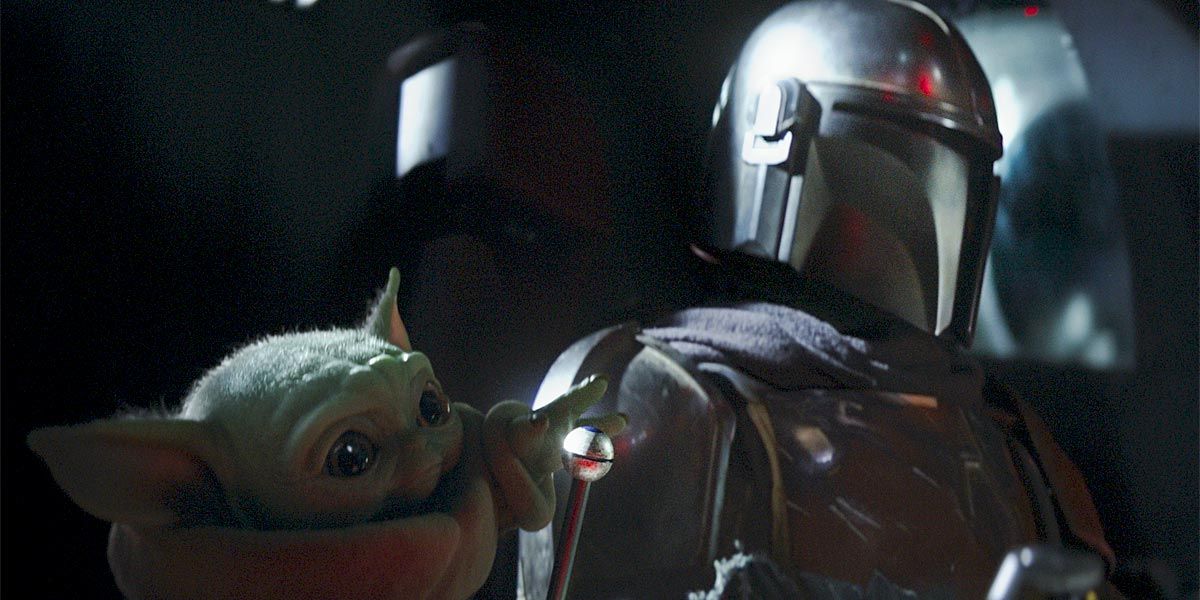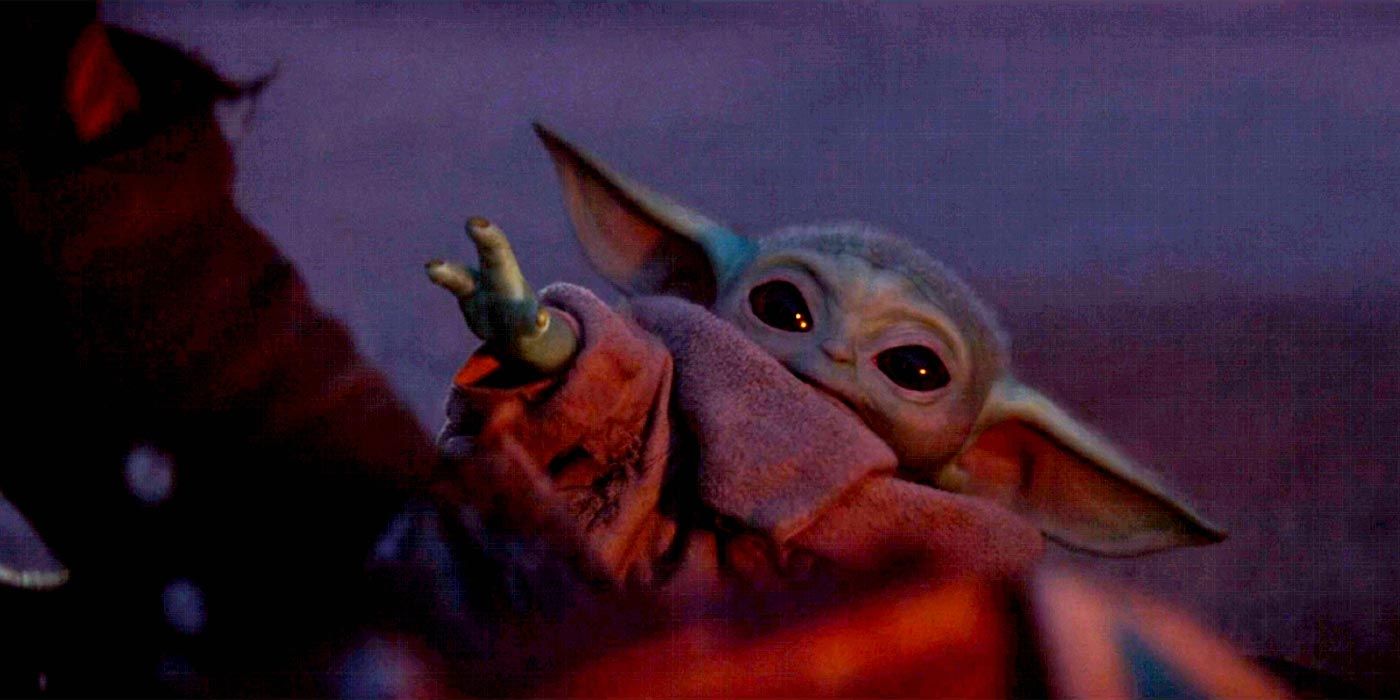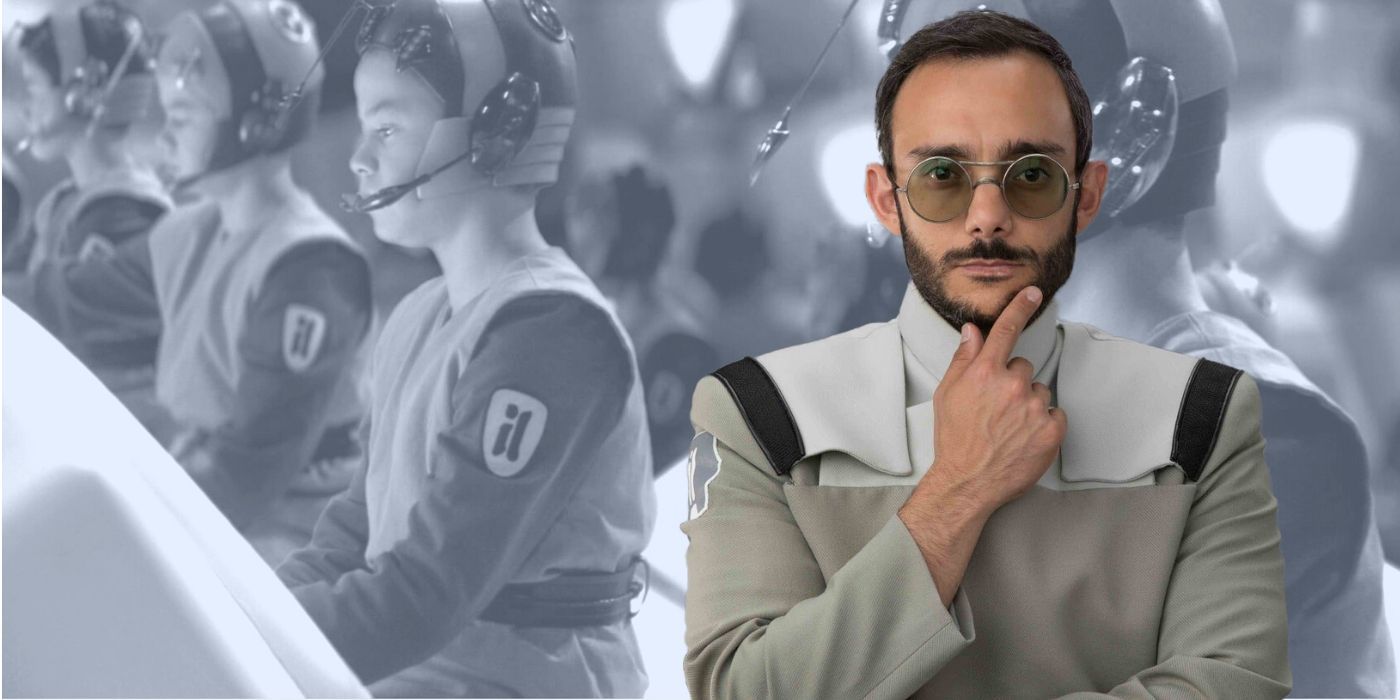WARNING: The following contains spoilers for The Mandalorian, streaming now on Disney+.
The third episode of The Mandalorian packs an emotional punch and sets the bounty hunter, played by Pedro Pascal, on an a path to redemption. After delivering "the Kid," better known as "Baby Yoda," to the Client (Werner Herzog) and receiving Beskar in payment, he undergoes a crisis of conscience and returns to retrieve the child, marking himself as a wanted man. But in the process, he overhears the Client order Dr. Pershing to extract all of the necessary material from the toddler, regardless of whether it might kill him. It's certainly possible they were discussing genetic material to clone him, as previously speculated, but there's an even higher chance the "extraction" involves midi-chlorians, the fan-derided symbiotic micro-organisms that inhabit every living being, connecting them to the Force.
Midi-chlorians inhabit everyone and everything in the Star Wars galaxy, but Force-sensitives contain a higher concentration. When the organisms reach a certain threshold, they allow their hosts not only to be connected to the Force but to use Force abilities. Anakin Skywalker, for instance, had a midi-chlorian count of more than 20,000. Similarly, one of the few things that we know about Yoda's species is that it's very rare and naturally strong in the Force. Yaddle, a female Jedi Master from the same species as Yoda and the Child, was able to control and slow down the vital functions of her opponents through her powers, something that sounds like the opposite of Darth Plagueis' gift with creating life through midi-chlorians.
We have already seen Baby Yoda use the Force to stop a charging Mudhorn in her tracks, and try to use the Force to heal Mando, so it's fair to assume his midi-chlorian count is through the roof. If Dr. Pershing was extracting modi-chlorians from Baby Yoda, and midi-chlorians are symbionts, it's logical the procedure would take a toll on the Child, which would explain how sedate he was for most of the episode.
But why would Pershing want to extract midi-chlorians? As we mentioned before, Pershing wears the Kamino emblem on his left arm, which indicates he probably has been in contact with cloning techniques. It could be that Pershing's mission is to research the combination of midi-chlorians with cloning, something that could, in theory, create super-soldiers with Force powers (like Galen Marek, aka Starkiller, or that entire subplot where Boba Fett discovered the terrifying Force experiments the Empire had been performing on the unfinished clones of his father). Or, a more sinister possibility is that he was commissioned to extract as many midi-chlorians as possible from the Child to try and revive someone through the Force, following on the steps of Darth Plagueis' experiments -- or even a combination of both.
That also matches Pershing's insistence that they keep the Child alive: While Kaminoans wouldn't need a living subject to proceed with industrial-scale cloning, midi-chlorians are much more delicate creatures that only reside in living beings. The death of the Child would put an end to the number of midi-chlorians that Pershing could extract for whoever hired him.
That said, midi-chlorians alone are not enough to justify the doctor's knee-jerk reaction to throw himself between Mando unleashed and Baby Yoda and try to protect him at all costs, begging for the life of the Child even before his own. That indicates the doctor's heart is in the right place, and that he might be, like Mando, trapped between a rock and a hard place.
Created by Jon Favreau, The Mandalorian stars Pedro Pascal, Gina Carano, Carl Weathers, Giancarlo Esposito, Emily Swallow, Omid Abtahi, Werner Herzog and Nick Nolte. A new episode arrives each Friday on Disney+.



